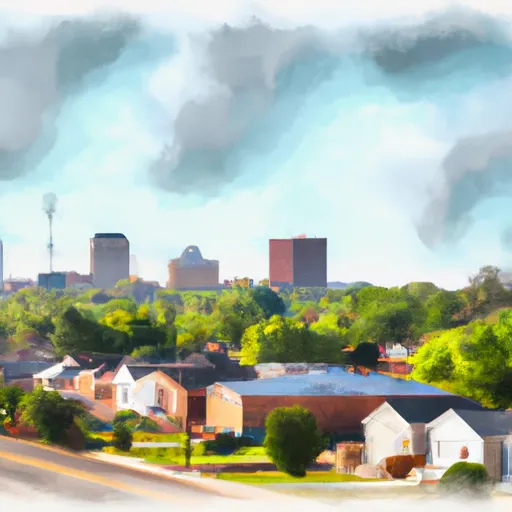-
 Snoflo Premium
Snoflo Premium
Get unlimited access to all our content
With no Ad interruptions! - Start Your Free Trial Login with existing account
Tucker
Eden Index
Climate
7.9
•
Recreation
5.1
•
Community
•
Safeguard
4.9/10

Tucker, Arkansas is a small town located in Jefferson County, in the southeastern region of the state. The town experiences a humid subtropical climate, characterized by hot and humid summers and mild winters. Summers are typically long, with temperatures often reaching into the 90s Fahrenheit (30s Celsius), while winters are relatively short and mild, with temperatures averaging in the 40s and 50s Fahrenheit (5-15 Celsius).
The hydrology constituents of Tucker are primarily influenced by the nearby Bayou Bartholomew, the longest bayou in the world. This waterway provides opportunities for various recreational activities such as fishing, boating, and kayaking. The bayou is known for its diverse aquatic wildlife, including catfish, bass, and various bird species, making it a popular spot for nature enthusiasts and birdwatchers.
In addition to water-based activities, Tucker offers other outdoor recreation opportunities. The town is surrounded by scenic landscapes and lush forests, providing ample opportunities for hiking, camping, and wildlife spotting. The region is also known for its abundant deer and turkey population, attracting hunters from across the state.
Overall, Tucker, Arkansas provides a pleasant climate, diverse hydrology constituents, and numerous outdoor recreation opportunities, making it an ideal destination for nature lovers and outdoor enthusiasts.
What is the Eden Index?
The Snoflo Eden Index serves as a comprehensive rating system for regions, evaluating their desirability through a holistic assessment of climate health, outdoor recreation opportunities, and natural disaster risk, acknowledging the profound impact of these factors on livability and well-being.
Climate Health Indicator (CHI): 7.9
Tucker receives approximately
1287mm of rain per year,
with humidity levels near 84%
and air temperatures averaging around
17°C.
Tucker has a plant hardyness factor of
8, meaning
plants and agriculture in this region tend to thrive here all year round.
By considering the ideal temperature range, reliable water supplies, clean air, and stable seasonal rain or snowpacks, the Climate Health Indicator (CHI) underscores the significance of a healthy climate as the foundation for quality living.
A healthy climate is paramount for ensuring a high quality of life and livability in a region, fostering both physical well-being and environmental harmony. This can be characterized by ideal temperatures, reliable access to water supplies, clean air, and consistent seasonal rain or snowpacks.
Weather Forecast
Streamflow Conditions
Lower Arkansas-Fourche La Fave
Area Rivers
Lower Arkansas-Fourche La Fave
Snowpack Depths
Lower Arkansas-Fourche La Fave
Reservoir Storage Capacity
Lower Arkansas-Fourche La Fave
Groundwater Levels
Recreational Opportunity Index (ROI): 5.1
The Recreational Opportunity Index (ROI) recognizes the value of outdoor recreational options, such as parks, hiking trails, camping sites, and fishing spots, while acknowledging that climate plays a pivotal role in ensuring the comfort and consistency of these experiences.
Access to outdoor recreational opportunities, encompassing activities such as parks, hiking, camping, and fishing, is crucial for overall well-being, and the climate plays a pivotal role in enabling and enhancing these experiences, ensuring that individuals can engage in nature-based activities comfortably and consistently.
Camping Areas
| Campground | Campsites | Reservations | Toilets | Showers | Elevation |
|---|---|---|---|---|---|
| Cypremort Point State Park | None | 3 ft | |||
| Grand Marais County Park | None | 79 ft | |||
| Opelousas City RV Park | 67 | 64 ft | |||
| Cane Creek State park | None | 257 ft | |||
| Chemin - A - Haut State Park | None | 125 ft | |||
| Crossett RV Park | 119 | 68 ft | |||
| Abbeville RV Park | 55 | 10 ft | |||
| Acadiana Park | 75 | 42 ft | |||
| Trulock - Arkansas River | 15 | 195 ft | |||
| Palmetto Island State Park | 96 | 5 ft |
Nearby Ski Areas
Catastrophe Safeguard Index (CSI):
The Catastrophe Safeguard Index (CSI) recognizes that natural disaster risk, encompassing floods, fires, hurricanes, and tornadoes, can drastically affect safety and the overall appeal of an area.
The level of natural disaster risk in a region significantly affects safety and the overall livability, with climate change amplifying these risks by potentially increasing the frequency and intensity of events like floods, fires, hurricanes, and tornadoes, thereby posing substantial challenges to community resilience and well-being.
Community Resilience Indicator (CRI):
The Community Resilience Indicator (CRI) recognizes that education, healthcare, and socioeconomics are crucial to the well-being of a region. The CRI acknowledges the profound impact of these elements on residents' overall quality of life. By evaluating educational resources, healthcare accessibility, and economic inclusivity, the index captures the essential aspects that contribute to a thriving community, fostering resident satisfaction, equity, and social cohesion.

